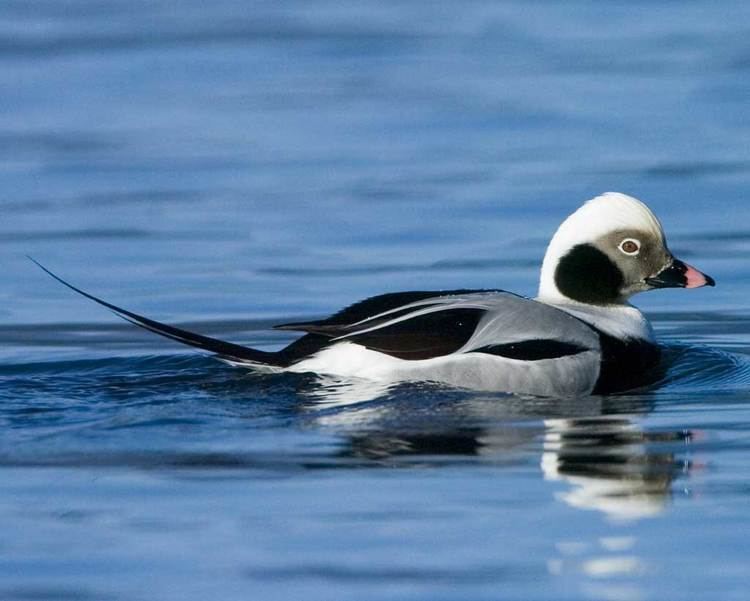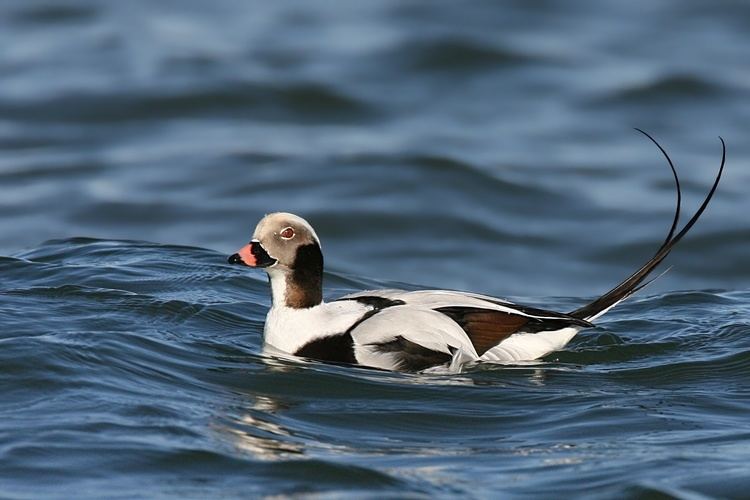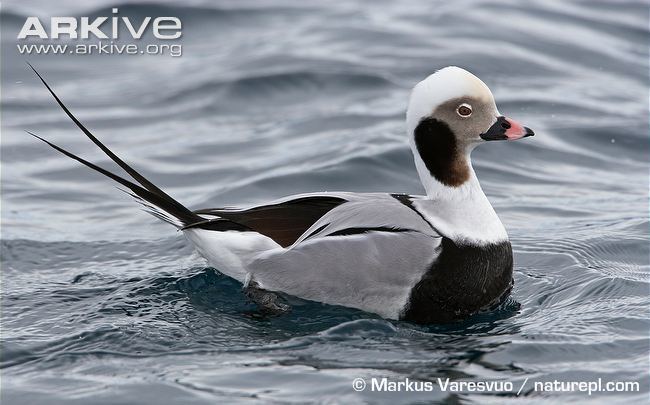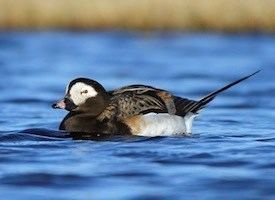Subfamily Merginae Scientific name Clangula hyemalis Higher classification Clangula | Genus ClangulaLeach, 1819 Phylum Chordata Rank Species | |
 | ||
Similar Bird, Greater scaup, Velvet scoter, Red‑breasted merganser, Common eider | ||
Voices long tailed duck
The long-tailed duck (Clangula hyemalis), once known as oldsquaw, is a medium-sized sea duck. It is the only living member of its genus, Clangula. This was formerly used for the goldeneyes, with the long-tailed duck being placed in Harelda, but the latter is the type species of the genus. An undescribed congener is known from the Middle Miocene Sajóvölgyi Formation (Late Badenian, 13–12 Mya) of Mátraszőlős, Hungary.
Contents
- Voices long tailed duck
- Long tailed ducks on lake ontario feb 2016
- Description
- Ecology
- Name
- Status
- References

Long tailed ducks on lake ontario feb 2016
Description

Adults have white underparts, though the rest of the plumage goes through a complex moulting process. The male has a long pointed tail (10 to 15 cm (3.9 to 5.9 in) long) and a dark grey bill crossed by a pink band. In winter, the male has a dark cheek patch on a mainly white head and neck, a dark breast and mostly white body. In summer, the male is dark on the head, neck and back with a white cheek patch. The female has a brown back and a relatively short pointed tail. In winter, the female's head and neck are white with a dark crown. In summer, the head is dark. Juveniles resemble adult females in autumn plumage, though with a lighter, less distinct cheek patch.
The males are vocal and have a musical yodelling call ow, ow, owal-ow.
Ecology

Their breeding habitat is in tundra pools and marshes, but also along sea coasts and in large mountain lakes in the North Atlantic region, Alaska, northern Canada, northern Europe, and Russia. The nest is located on the ground near water; it is built using vegetation and lined with down. They are migratory and winter along the eastern and western coasts of North America, on the Great Lakes, coastal northern Europe and Asia, with stragglers to the Black Sea. The most important wintering area is the Baltic Sea, where a total of about 4.5 million gather.

The long-tailed duck is gregarious, forming large flocks in winter and during migration. They feed by diving for mollusks, crustaceans and some small fish. Although they usually feed close to the surface, they are capable of diving to depths of 60 m (200 ft).
Name
In North American English it is sometimes called oldsquaw, though this name has fallen out of favour under influence of negative connotations of the word squaw in English usage. Some biologists have also feared that this name would be offensive to some Native American tribes involved in the conservation effort. The American Ornithologists' Union stated that "political correctness" was not sufficient to change the name, but "to conform with English usage in other parts of the world", it officially adopted the name "Long-tailed Duck". The scientific name is derived from Latin clangere, "to resound", and hyemalis, "of winter".
Status
The long-tailed duck is one of the species to which the Agreement on the Conservation of African-Eurasian Migratory Waterbirds (AEWA) applies.
